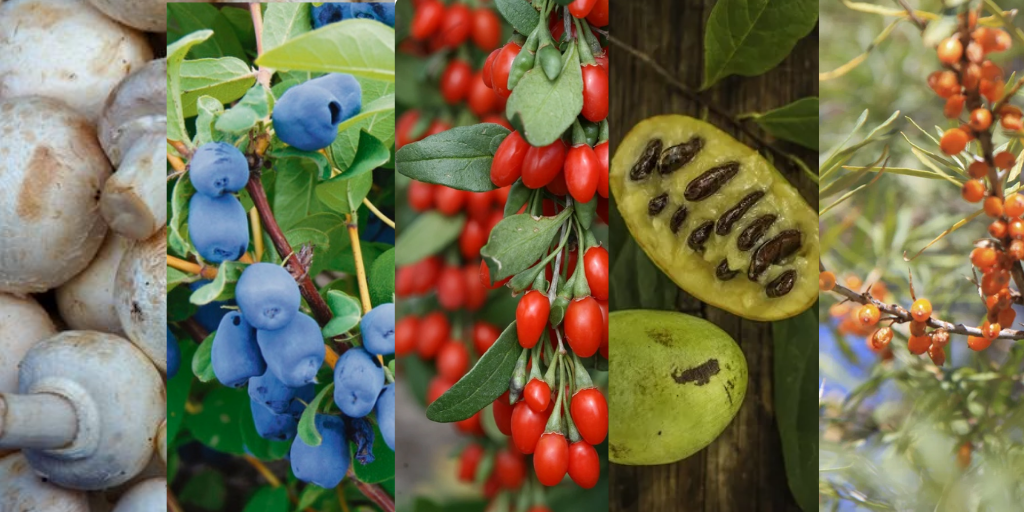High value, labour-intensive crops require special conditions and careful management for a successful season. Often the success of high-value crops comes down to small decisions about production and treatments. Proper documentation and farm record keeping are necessary to know what worked, and what didn’t. The margins are slim and every small increase in yield goes a long way.
Here are some examples of produce that are being cultivated for their distinct features and consumer appeal:
Mushrooms
Mushroom production can be done on a large, commercial scale, but it’s also an appealing option for small growers. Fungi are high in antioxidants and range widely in texture and flavour depending on the variety. Defining a mushroom as ‘specialty’ depends upon what market region you are considering. In North American and European markets, for example, button mushrooms are more considered to be the standard, whereas shiitake and oyster varieties are a growing specialty market. According to a 2016 statistic from the FAO, China is the world’s leading producer of mushrooms, with the US and Italy in second and third place.
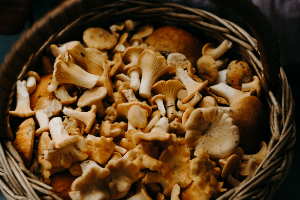
Traditionally grown on logs, contemporary scalable practices allow for production in bags using straw or sawdust as substrate–a major benefit of this crop is its capacity to be cultivated in a variety of different indoor circumstances. One constant in mushroom farming is its intensive labour demand, due to the continual need for harvesting and packing. Sanitation controls are particularly critical to maintain, from spore inoculation to harvest, which adds additional labour considerations. Costs of growing materials, like compost, also add production variables that differ from other crop cultivation.
Paw Paws
The paw paw is exclusive to North America, originally cultivated by Indigenous communities throughout the continent. Its decline in prevalence was caused largely by lack of favour in colonial tastes, with European settlers destroying paw paw trees out of desire for farmland space. Presently, paw paw trees are found particularly in southern Ontario, with other strains found in American states such as Ohio, Missouri, and Kentucky. Some varieties are more winter hardy than others. Related to custard apple, the fruit is often likened to being a combination of a mango and banana. Its distinctive nature coupled with sparse availability has led to a contemporary cult following.
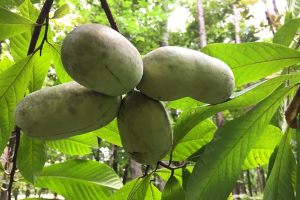
Without further development, commercial production of paw paws is not viable because the fruit is highly sensitive and perishable, but can be a good choice for small scale, organic producers who can sell close to home. Kentucky State University has a dedicated research program to the plant, and there are hopes of developing a viable commercial variety in the future.
Goji Berries
The goji berry (also known as a wolfberry) has long been favoured as a fruit with medicinal properties, with record of consumption documented as early as the Tang dynasty in China. The berries are often sold dried, though fresh is also prevalent, but either way each has to be picked very carefully to avoid damage when harvesting off of the short shrubs they come from. These shrubs are adaptive, which makes goji berries an appealing cash crop pick for a range of temperate growing regions, particularly for smallholder scale operations.
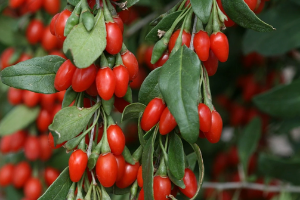
The global goji berry market is continuing to grow, as the health benefits of the crop intrigue broader audiences in North America and Europe, intersecting with juice product and wellness trends. The pricing has increased due to China’s late season from rainy weather. Producing goji berries is lucrative, but the cost to start is high.
Hardy Kiwi
The hardy kiwi –also known as a kiwiberry – is a perennial vine native to regions like Japan, Korea, Northern China, and Siberia. It’s been cultivated for ornamental landscape purposes in the northeastern US since the mid 1800s. Related to the fuzzy kiwi, the hardy kiwi is smooth-skinned, grape-sized, and cold tolerant, and with contemporary breeding the plant is enjoying expanded production in regions with cold winters. Seasonal fruiting varies on location, but for temperate areas like southern Ontario, Canada, the hardy kiwi is typically harvested from mid-September to mid-October.
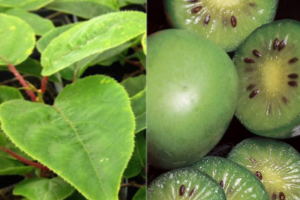
Curiously, hardy kiwi vines are known to be targeted for destruction by cats. The trunks of the plants give off a catnip-like aroma, enticing felines to go wild!
Sea Buckthorn
Native to northwestern Europe, central Asia, western and northern China, and northern Himalayas, the sea buckthorn is hardy and versatile. The berry is used both as food and for its medicinal properties, and like the goji berry, has been enjoying increased popularity as a purée to use in juice and desserts. Apart from cultivation for agricultural purposes, the sea buckthorn can also assist in erosion control, improving overall soil conditions. It can handle tough environments like highways where they can withstand being subject to repeated salt spray.
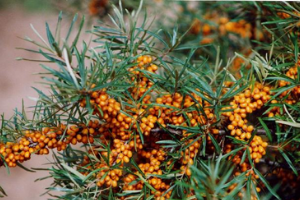
When commercially grown, harvesting can be achieved by machine or by hand. Typically the sea buckthorn is, well, thorny, with spines on some varieties spanning two inches. Thornless varieties do exist, thankfully, making handpicking less prickly. Estimates vary on how much person power is required to pick per hectare, with factors including whether the berries are intact or not, as they are difficult to handle.
Haskaps
Haskaps are commercially planted in Canada, US, eastern Europe, Japan, Russia, Chile and Australia. Also known as honeyberries, edible honeysuckles, blue honeysuckles, sweet berry and Canadian honey berry, the name ‘haskap’ originates from Japan and means “little present on the end of a branch”. Though often presumed to be related to blueberries and cranberries due to its appearance, it is related to the elderberry and snowberry. The haskaps’ resilience to cold temperatures lends appeal to northern growers, with bushes able to withstand temperatures as low as -45 C, and even when flowering can withstand -11 C.
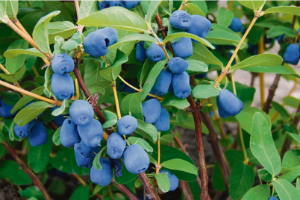
Contemporary commercial crops bred in Canada at the University of Saskatchewan over the past two decades, from plants natively found throughout Canada, Japan and Russia. Haskaps require cross pollination of a compatible variety to produce fruit, and so each of these need to bloom at the same time for success. Contemporary varieties have been bred not to ‘sucker’, meaning that haskap plants will not spread the way that raspberries or saskatoons can. In other words, don’t over prune!
Careful management of high-value specialty crops is how you can find success season after season. Having possible every tool at your disposal will improve the slim margins that you derive from production and treatments. Croptracker allows you to maximize your yield by offering the detailed data insights you need for those more precarious yet rewarding crop returns, with customizable cultivation management tools.
Interested in learning more about Croptracker? Learn more about our Cultivation Management Software, or book a demonstration to schedule a meeting with our product experts.
And as always, if you're ever stuck, never hesitate to e-mail us at support@croptracker.com or Live Chat with us by clicking the green speech bubble ![]() in your bottom right-hand corner. We're always happy to help, so Croptracker can make your farm more efficient, safer, and more profitable!
in your bottom right-hand corner. We're always happy to help, so Croptracker can make your farm more efficient, safer, and more profitable!
